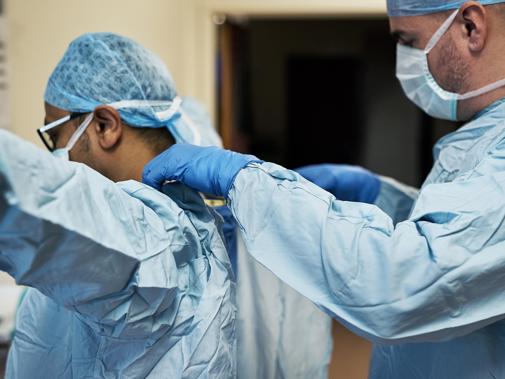Recently published guidelines designed to help employers determine the level of risk faced by staff through the assessment of key factors such as age, sex and ethnicity struggle to provide ‘sufficient practical advice’ on how to mitigate risks to health.
The warning comes as a recent survey conducted by the BMA reveals that doctors from BAME (black, Asian and minority ethnic) backgrounds, a group that has suffered disproportionately higher numbers of deaths due to the virus, are also experiencing greater difficulties in accessing PPE (personal protective equipment) and risk assessments than white colleagues.
Guidance variations
In response to these concerns, BMA council chair Chaand Nagpaul has written to NHS England chief executive Sir Simon Stevens, insisting that ‘every possible resource’ should be deployed to protect frontline staff, particularly those identified as being high risk.
Dr Nagpaul, who last month had written to Sir Simon urging him to develop a framework for assessing risk, said that while he was pleased his original request had been acknowledged, the guidance did not go far enough.
He writes: ‘I fear that the framework, while identifying the higher risks associated with each of the factors specified above, does not give sufficient practical advice to organisations.
‘There is great variation locally in the use of and approach to risk assessments, both in secondary care and in primary care where, for example, occupational health services are not available to most staff.
‘Over half of respondents to a recent BMA survey were not aware of any risk assessment in their place of work. And of those who have not been risk assessed, four in 10 think they should have been.
‘To avoid a postcode lottery approach to the protection of doctors’ lives and health, a national system for assessing the level of risk facing individual doctors must be consistently applied across the NHS.’
Speaking out
In his letter, Dr Nagpaul also highlights concerns around infection and ethnicity, highlighting the existence of growing evidence pointing to BAME healthcare workers and patients being at greater risk.
Findings from the BMA’s latest COVID-19 tracker survey have highlighted a range of concerns among doctors regarding issues such as health and personal safety in their role in tackling the pandemic, with notable differences reported according to ethnic background.
While 91 per cent of white doctors undergoing a COVID-19 risk assessment by their employers reported being satisfied with the process, this figure fell to 80 per cent among BAME staff.
When asked whether they felt pressured into seeing patients without PPE, in AGP (aerosol-generating procedure) areas, 3 per cent of white doctors said they often were and 17 per cent said they sometimes were. In contrast 10 per cent of BAME doctors often felt pressured, and 31 per cent sometimes pressured.
BAME doctors were found in the survey to be more likely to experience shortages of filtering face piece 3 masks in AGP areas, more likely to fail first-time fit testing, and were more fearful about speaking out.
In addition to the assessment tool commissioned by NHS England, the BMA has issued its own advice to doctors informing them of their rights and means by which they can raise concerns about risks to their health, as well as the responsibilities of employers.

